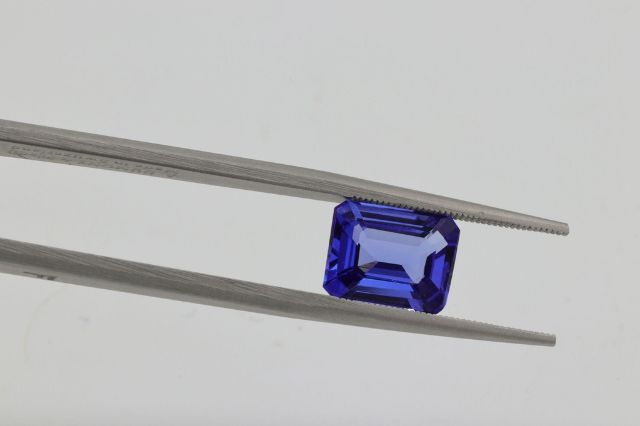Lifesytle
Good Cyber Hygiene Practices Can Help You Stay Safe Online


Hygiene is a word most often associated with things like brushing your teeth, grooming your hair, and staying clean. However, this phrase also applies to good habits you can use to stay safe online.
What is Cyber Hygiene?
Cyber hygiene refers to using effective tools and resources regularly to perform tasks that ensure your online safety. Think of it as creating helpful habits to make your online experiences safer. For example, it could be as simple as changing the way you access an online resource or as complex as purchasing software and installing it on your router or firewall to keep your entire network safe from intruders.
The goal is to protect you from cybercriminals. Most people don’t spend a lot of time thinking about cybersecurity, but they should. Since 2020 cybercrime has become more prevalent than ever before. Businesses are most often the target, and companies that don’t take cybersecurity seriously will pay the price both financially and with the loss of their data.
Why is Cyber Hygiene Important?
Training yourself to look at cyber security as a priority can protect you against many types of fraud. For example, securing your network could help prevent security breaches, hacking incidents, ransomware, and other types of malware infections. Securing your devices could also protect you, your employees and your customers from identity theft.
If you stay on top of your cyber security and monitor your network regularly, you will be better equipped to respond to an incident much faster and more effectively.
A data breach could be devastating to your company. The lost data, damaged credibility, and financial losses are reasons enough to make cyber hygiene practices a priority.
Tips to Maintain Effective Cyber Hygiene
The first tip to creating good cyber hygiene habits is to ensure you are using the most effective products and services. Before selecting devices and services, research how well they perform and choose those products that stand the test of time. Other tips for maintaining effective cyber hygiene are:
- Always use the most secure login option available. If the device or service offers two-factor authentication (2FA) or multi-factor authentication, choose that. If you can set up biometric access, turn that on for the most effective protection.
- Adhere to strict policies that you decide the company needs for the utmost protection. Don’t bypass security or take any shortcuts. Take the time necessary to stay safe.
- Set up regular maintenance plans for all your equipment to update firmware and outdated/vulnerable hardware components.
- Install monitoring software on your network so you can receive alerts if anyone tries to break into your systems or connect to your devices. Review the access logs regularly.
- Audit your entire network for any vulnerabilities. For example, IoT devices may be vulnerable to hacking. Install a VPN on your router to protect them.
- Document every device, software version, operating system, and access permission policy.
- Adopt a zero-trust policy for all devices and software.
- Craft ironclad policies regarding cyber hygiene and get everyone on board.
- Configure your network firewall with the most robust security settings available.
- Institute cybersecurity training throughout your organization, paying particular attention to phishing and social engineering campaigns educating staff on how to handle them.
- Install and run good antivirus on all your devices. Any unprotected device could provide an entry point for hackers.
- Keep all operating systems and software updated with the latest security patches.
- Never reuse passwords on multiple websites.
- Always use long and strong passwords also consider a password vault to manage them.
- Encrypt hard drives and mobile device data.
- Keep good backups in case you must restore everything. Consider storing backups off-site.
- Secure your router and Wi-Fi network with strong passwords.
- Don’t just delete files. Instead, run special software to remove them from the hard drive completely.
- Keep a close eye on access and user accounts.
- Sign up for identity monitoring services to protect your personal data and alert you of any changes.
Benefits of Cyber Hygiene
The benefits of cyber hygiene are endless. Nothing can compare with privacy and security. However, the two main goals of cyber hygiene are maintenance and security. A rigid process of routine maintenance and strict security policies will go a long way towards securing your entire network, keeping you, your employees, vendors, and the company safe.
Some benefits of a healthy cyber hygiene practice are:
Security
Good cyber hygiene allows you to secure your entire network, devices, hardware, and software. Imagine the peace of mind knowing your data is safe and you are protecting your entire investment by employing top-notch tools and resources for a secure online experience.
Protected Customer Data
The last thing you want is to wake up to find your customer data has been exposed online or is being held for ransom. Protecting your customer data preserves your reputation and builds brand trust.
Increased Opportunity to Find Previously Unmanaged Assets
Hiring a forensic cybersecurity team to thoroughly audit your systems could uncover unmanaged assets or outdated software that could pose a serious risk. Any weak link in your system opens the door to a hacker. Regular cyber hygiene practices can help identify these vulnerabilities and let you secure them before they become a problem.
Identify Unauthorized Software or User in a System or Device
Additionally, by installing networking monitoring software and hiring solid IT professionals to review your system, you could potentially find an unauthorized user or software just waiting to wage an attack against your organization.
It is much easier and less costly to prevent a cyber-attack than clean up after one.
These are just a few of the reasons why you, as a business professional, should strongly consider instituting a cyber hygiene policy for your company. With data breaches, fraud, and identity theft on the rise, businesses cannot do enough to keep their corporate data, employees, and customers safe.
Lifesytle
How to Pack a Mattress When Moving from Toronto to Los Angeles


Like any item, a mattress requires careful handling and proper use. To avoid deformation during the move, the mattress needs to be packed and moved properly.
What are the nuances you need to take into account when moving a mattress?
Mattresses come in many shapes and sizes: frame, frame-less, with and without springs, and custom mattresses, custom shapes and sizes, so it’s important to figure out how to move your mattress specifically.
What Are the Risks of Improper Moving
- Damage or contamination of the upholstery—this will not affect the operation, but the mattress may lose its original appearance;
- Damage to the spring unit—a more serious risk that can affect the future operation of the mattress;
- Filler slumping—there is a risk of losing the orthopedic properties of the mattress.
In order not to have an unpleasant experience when moving the mattress, it is necessary to approach the preparation and comply with the conditions below carefully.
How to Pack a Mattress When Moving from Toronto to Los Angeles
If the construction allows, remove the mattress cover and wash and dry it. Before moving, the mattress must be packed securely so that it will not get dirty or damaged.
Different materials are used for each type of mattress. But, as a rule, it is cardboard, bubble wrap and stretch wrap. It is very important not to over-stretch the mattress.
Movers pack some types of mattresses together with the bed grid (orthopedic base) to give rigidity.
Carrying By Stairs Or Elevator
Springless mattresses can twist—this type of mattress is more mobile and will not cause trouble when moving. It is worth noting that some types of spring mattresses also can twist; they are initially supplied as twisted and vacuum-packed.
If you don’t remember how exactly the new mattress was delivered, you shouldn’t risk twisting the mattress.
Round, orthopedic, spring and rigid-shaped mattresses must not be bent or twisted.
Many people mistakenly believe that moving oversized mattresses (massive or non-standard shapes) does not require special efforts, but this is not the case. Such mattresses may have a different spring structure, mixed filler, etc.
Moving these mattresses is worth paying special attention to; otherwise, failure to follow some rules may entail unfavourable consequences.
If you do not follow these rules, the mattress’s service life is significantly reduced, and damage to the springs is possible, which threatens unpleasant squeaking and uncomfortable sleep.
Moving Process
A passenger car will be sufficient for moving twisted mattresses, but other types of mattresses will require a truck or a furniture van.
Do not place heavy objects on top of the mattress. The surface may be dented, and the mattress may not return to its original position.
Place the mattress indoors or in a vehicle on the long edge of the mattress to reduce the load and the time the mattress is on the edge without support.
Unpacking at the New Place
Unpacking should be done very carefully. If the mattress has been twisted, unpack it and give it as much as possible 24 hours to recover its original shape.
Conclusion
In conclusion, successfully moving a mattress or other things from Toronto to Los Angeles requires more than just physical relocation; it demands meticulous planning, proper packing, and careful moving to preserve its integrity.
Remembering the dos and don’ts—from using the right materials to avoiding bending or twisting certain types—can make all the difference.
With the right approach and a team experienced in long distance moving, your mattress can arrive in Los Angeles in perfect condition, ensuring you continue to enjoy comfortable, restful sleep.
Trust in the process and the professionals, and your move will be smooth and worry-free.
Fashion
Unveiling the Allure: Your Guide to Precious Stones


Humanity’s quest for beauty and rarity has long captivated mankind’s fascination with precious stones. From sparking legends to donning crowns of royalty, these natural wonders continue to capture our fascination. This guide takes us deep inside Earth’s treasured gems, understanding and appreciating their presence among its mineral kingdom.
A Gemstone’s Journey: From Earth to Exquisite
Precious stone formation is a fascinating feat of nature that occurs over millions of years beneath Earth’s surface. Starting with minerals, heat, and pressure combining in perfect balance to produce gems with unparalleled structures and hues.
As they rise from beneath our feet their journey ends at our hands where each gem is mined, cut, polished into an artistic masterpiece. One can hold such gem and witness how it was transformed from raw earth into exquisite beauty – increasing both visually as well as financially and sentimentally value as it happens under our very eyes!
Diamonds Are Supreme
Diamonds represent luxury and endurance at their core. Crafted by carbon, heated to extreme temperatures deep underground and subjected to immense pressure, diamonds are prized for their unparalleled hardness and brilliant fire.
Beyond their physical qualities, gemstones have come to symbolize everlasting love and commitment. Each diamond tells its own timeless tale, one as timeless and clear as its reflective surface.
Cutting and shaping these gems expertly is what allows them to show their true splendor – an exact process that balances proportions, symmetry, polish, and light reflection for maximum sparkle and appeal. Wholesale diamonds in particular are selected and cut carefully so as to maximize both value and appeal.
Sapphires: Serenity in Blue
Sapphires have long been recognized for the serene and deep oceanic blue hue they represent, which has come to symbolize serenity, nobility and sincerity for centuries – far beyond aesthetic considerations alone. Corundum gems similar to rubies can often feature trace elements such as iron and titanium that give them their characteristic blue hues.
Although Kashmir was historically famed for producing the world’s finest blue sapphires, today they can be found all across the world, from Australia and Sri Lanka alike. Lauded for both their celestial beauty and remarkable durability, sapphires make a wonderful statement piece or engagement ring choice and promise a bond as eternal as the stone itself.
Emeralds: Lush Green Mystique
Emeralds evoke nature’s bounty through their lush green hue, from pale mint to deep forest green. Emeralds have long been associated with fertility, rebirth and love throughout history. Ancient civilizations revered them, with Egyptian Queen Cleopatra famously donning herself with them as her jewelry of choice.
Their color has become so synonymous with nature that the term emerald green often refers to all vibrant green shades outside its range; even their inclusions – known as jardin – have come to symbolize their perfection making flaws part of each emerald’s perfection!
Conclusion: The Eternal Allure of Precious Stones
Precious stones represent an immense and diverse world that spans millennia of Earth history, human achievement and artistic expression. No matter your taste in jewelry or precious stones, their timeless appeal cannot be denied. Here we only scratched the surface, like when cutting diamonds unleashes their flame.
Discovering and appreciating these earthly treasures that add special moments of wonder is part of life, so whenever you find yourself mesmerized by an eye-catching piece of gemstone jewelry, remember its unspoken legacy is waiting to be unlocked and enjoyed.
Pets
How to Treat Anxiety in Dogs


Does your dog have anxiety? Just like humans, dogs can experience anxiety. In fact, most dogs will experience anxiety at some point in their life. This anxiety can become more serious and long-term if action is not taken to control it, which could lead to debilitating behavioural issues and all kinds of health problems.
As a result, it’s important to know the signs of anxiety in dogs and how to treat it.
This post takes a look at some of the common causes of anxiety in dogs, as well as a few of the signs of anxiety to look out, before delving into some of the ways in which you can help treat your dog’s anxiety.
What causes anxiety in dogs?
Many things can trigger anxiety in a dog. Some of the most common causes include:
Separation from loved ones
Dogs are very prone to separation anxiety – especially when they’re still young. Most dogs will first experience separation anxiety as a puppy after being separated from their mother and litter. This does not last too long providing a puppy is properly adjusted to their new home (this post delves more into adjusting a puppy to their new home).
Many dogs also experience separation anxiety when separated from their owner. Dogs that are left alone are particularly likely to experience anxiety. Having some familiar company can reduce these feelings of anxiety, but most dogs will still be unsettled.
Changes in routine/lack of routine
Just like many humans, dogs love routine. It helps them know what to expect and to relax. Without routine, dogs may feel that they have to constantly be on guard and may act more erratically.
Big changes in routine can also throw dogs off and make them feel anxious. This includes things like moving home or changing their food.
New members of the household
Dogs may become anxious when new pets or people are introduced to a household. They may see them as competition or even a threat. While dogs are very territorial and will behave aggressively to people they don’t know, others may behave more timidly. It varies depending on the dog and the new arrival.
Abuse/trauma
Some rescue dogs may have been abused by previous owners, which could result in them being naturally more anxious. Certain traumatic events can also cause phobias in dogs just like humans. For example, a dog may become afraid of young kids if one child previously injured them, or they may become afraid of getting in a car if they experienced an unpleasant car journey.
Lack of stimulation
Some dog breeds need to be kept regularly stimulated. Boredom may lead to restlessness and anxiety of not knowing what to do. An example could include locking a dog in a room all day with no toys.
Sensory overload
While not enough stimulation can make dogs anxious, so can too much stimulation. Dogs have heightened senses of hearing and smell, and so can become particularly anxious when exposed to frequent loud noises or lingering unpleasant smells. Many dogs get very anxious around times of the year when there are fireworks. Similarly, strong smells of citrus of vinegar may cause dogs to avoid certain rooms.
Are some dog breeds more anxious than others?
All dog breeds are prone to anxiety. However, some dogs are known to get more anxious to certain triggers.
Research has found that the breeds most prone to anxiety are Lagotto Romagnolos, Wheaten Terriers, Spanish Water Dogs, Shetland Sheepdogs and Miniature Schnauzers. Mixed-breed dogs have also been found to be more anxious than pure-bred dogs, although it’s worth noting that mixed breed dogs are less at risk of developing most other health problems.
Signs of anxiety in dogs
Some dogs are quite good at hiding their anxiety. However, most will exhibit some symptoms that show that they are in distress. Some of the telltale signs that a dog is anxious include:
- Whining/barking: Many dogs bark when exposed to threats to whine when lonely or bored.
- Eyes, ears and tail: When anxious, it is common for dogs’ eyes to widen, their ears to go back and their tail to go between their legs.
- Pacing and restlessness: A lot of dogs pace up and down when stressed. Some try to sleep or sit down but keep changing position or getting up.
- Excessive yawning/drooling/licking: Some dogs keep yawning as a way of relieving stress (most commonly from boredom, although it can be due to other stress triggers). Others start drooling a lot, or start licking their lips or themselves to stay stimulated.
- Trying to hide or escape: Many dogs will try to run away from stress triggers. For example, some dogs will run away from a vacuum cleaner and hide in another room.
- Changes in appetite: If a dog is in a state of constant stress, they may refuse to eat. Others may become extra ravenous and try to eat foods they wouldn’t usually try to go for.
- Changes in bowel movements: Anxiety can also cause some dogs to develop diarrhoea. During periods of extreme stress, some dogs may also feel unable to hold their bowels and may poo inside – even if long trained not to.
- Panting/shaking: A lot of dogs pant a lot when stressed. When under a lot of stress, dogs may start to tremble too.
- Foul smells: A lot of dogs express their anal glands when stressed. This can lead to a foul fishy odour.
- Excessive shedding: Very stressful situations or prolonged stress can also cause some dogs to lose their hair. It is natural for many dogs to shed their coat regularly. However, you should look out for lots of shedding in a short period of time or lack of hair regrowth.
How to relieve anxiety in your dog
There are several measures you can take to help alleviate feelings of anxiety in your dog. A few examples are included below.
Play with/exercise them daily
Regular physical activity and bonding time can help alleviate boredom. It can also tire out your dog, so that they’re able to deal with separation anxiety more easily (many dogs will take a nap after a long walk). Some breeds need more exercise and play time than others. Make sure you understand your dog’s needs.
Enjoy strokes and cuddles
Many dogs can also be calmed simply by providing physical contact. Petting your dog or even allowing them to lie by you while touching you could help them feel calmer in stressful situations such as a fireworks display.
Allow them some private space
While dogs love attention, they can still get overwhelmed by too much physical contact. This is common in families with young kids or when guests are coming around. In these cases, dogs may need a private space to retreat to in order to relax. A crate is the best option for this – just make sure to tell everyone not to bother your dog if they retreat to their crate.
Play music/put the radio on
Dogs can get more anxious when left alone in a quiet environment. Studies have shown that playing a radio or some background music can help put dogs at ease by giving them a sense of being around people. Music can also be used to drown out loud sounds like fireworks or traffic, which may frighten your dog at certain times.
Use calming familiar scents
You can also calm your dog by introducing familiar soothing scents. For example, separation anxiety in puppies can be reduced by leaving them with a blanket that smells of their mother. Similarly, leaving a dog with an item of clothing that smells of you could calm them if they are staying around someone else’s house.
Try anxiety medication for dogs
There are many supplements containing natural anxiety-relieving ingredients that you can buy for dogs. Ingredients to look out for include l-theanine, lemon balm, valerian and chamomile. These supplements can be added to their food. You can also buy supplements including ingredients like melatonin to improve your dog’s sleep quality. Stronger anxiety medication can be prescribed by a vet.
Should you get professional help?
Professional intervention is sometimes necessary with very anxious dogs. There are a few professionals that you can talk to.
An animal communicator is one professional you can look into. These professionals can help translate feelings that your dog may be having – which could include identifying sources of stress. This could include spending some time with your dog to truly understand their behaviours.
Animal behavioural therapists can meanwhile help diagnose sources of anxiety and help your dog to overcome them. This could include alternative training methods to help reduce stress triggers. Thi can be very useful for dogs that have experienced trauma or abuse.
Finally, you can consult a vet. On top of prescribing medication, vets can check that anxiety isn’t caused by a physical health issue. For example, joint pain may make a dog afraid of stairs, while toothache could make a dog anxious of food.
Conclusion
Anxiety in dogs has many causes and there are many possible ways to treat it. By taking your time to identify triggers and explore treatment options, you can look after your dog’s mental health.
-



 Quotes4 years ago
Quotes4 years ago125 Inspirational Car Quotes and Captions to Celebrate Your New Car
-



 Growth4 years ago
Growth4 years ago188 Deep Hurt Quotes with Images
-



 Quotes3 years ago
Quotes3 years ago148 Romantic Love Quotes for Her from the Heart
-



 Quotes3 years ago
Quotes3 years ago185 Cute Boyfriend Quotes for the Guy You Love
-



 Quotes3 years ago
Quotes3 years ago141 Best Heart Touching Quotes about Love, Life, and Friendship
-



 Quotes3 years ago
Quotes3 years ago134 Time Flies Quotes for the Unforgettable Moments
-



 Quotes3 years ago
Quotes3 years ago122 Inspirational Kite Quotes That’ll Make You Wanna Fly Right Now
-



 Quotes4 years ago
Quotes4 years ago101 Powerful Black Women Quotes to Empower You







